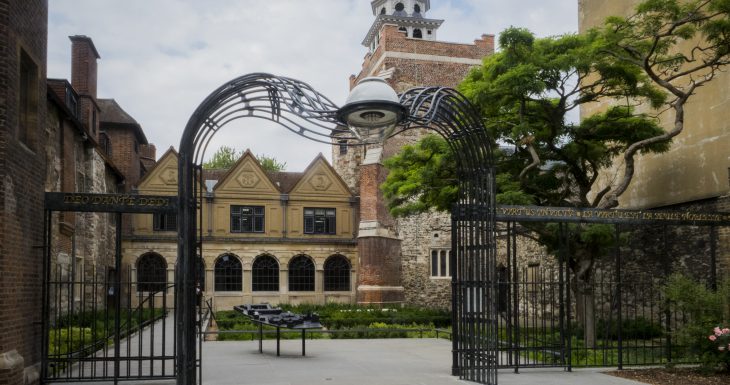The Charterhouse
A historic complex of buildings in Smithfield, London, dating back to the 14th century and home to the famous almhouse.
Smithfield, London

- Accessible parking
- Hearing loops
- Large font signs and leaflets
- Guide dogs welcome
- Wheelchair ramps/routes
- Accessible toilets
- Access statement available
Today the Charterhouse is home to a community of Brothers who benefit from the charity established by Thomas Sutton early in the seventeenth century. However, our story is much more than the story of the almshouse. For we have been living the nation’s history since 1348.
Peer closely through the half light of the Master’s Court at dusk and you might make out the ghosts of Victorian physicians or plague victims, catch a glimpse of Elizabeth I commanding one of her courtiers – or spy the fourteen-year-old John Wesley kneeling at prayer.
The story begins in 1348 during the Black Death, when the land was used as a burial ground for victims of plague. In 1371, the Charterhouse was built – a Carthusian monastery, which flourished throughout the later medieval and early Tudor period.
With the dissolution of the monasteries, the Charterhouse became a mansion for wealthy noblemen and a refuge for royalty. Elizabeth I met the Privy Council here in the days before her coronation in 1558 and James I used the Great Chamber to create 130 new Barons before he was crowned. But it was in 1611 that Thomas Sutton bought the Charterhouse and established the foundation that now bears his name.
Thomas Sutton’s will provided for up to 80 Brothers: ‘either decrepit or old captaynes either at sea or at land, maimed or disabled soldiers, merchants fallen on hard times, those ruined by shipwreck of other calamity’ as well as Charterhouse school. James I retained his connection with the Charterhouse, becoming the first Royal Governor of Thomas Sutton’s foundation.
Further facts
- The site was London’s largest Black Death burial ground in 1348-49.
- Thomas More studied at the Charterhouse when it was a Carthusian monastery and considered joining the order.
- Elizabeth I spent the first five days of her reign as a guest of Lord North at the Charterhouse.
- Governors of the Charterhouse include all Monarchs including and after James I. Oliver Cromwell was a Governor as well. Other Governors include the first Duke of Wellington, Judge Jeffries, John Dunne, the Duke of Monmouth and Robert Peel.
- John Wesley, William Makepeace Thackeray and Robert Baden-Powell were all pupils of the school when it was based at the Charterhouse.
- The Association Football offside rule as we know it was invented at the Charterhouse.
- Accessible parking
- Hearing loops
- Large font signs and leaflets
- Guide dogs welcome
- Wheelchair ramps/routes
- Accessible toilets
- Access statement available
